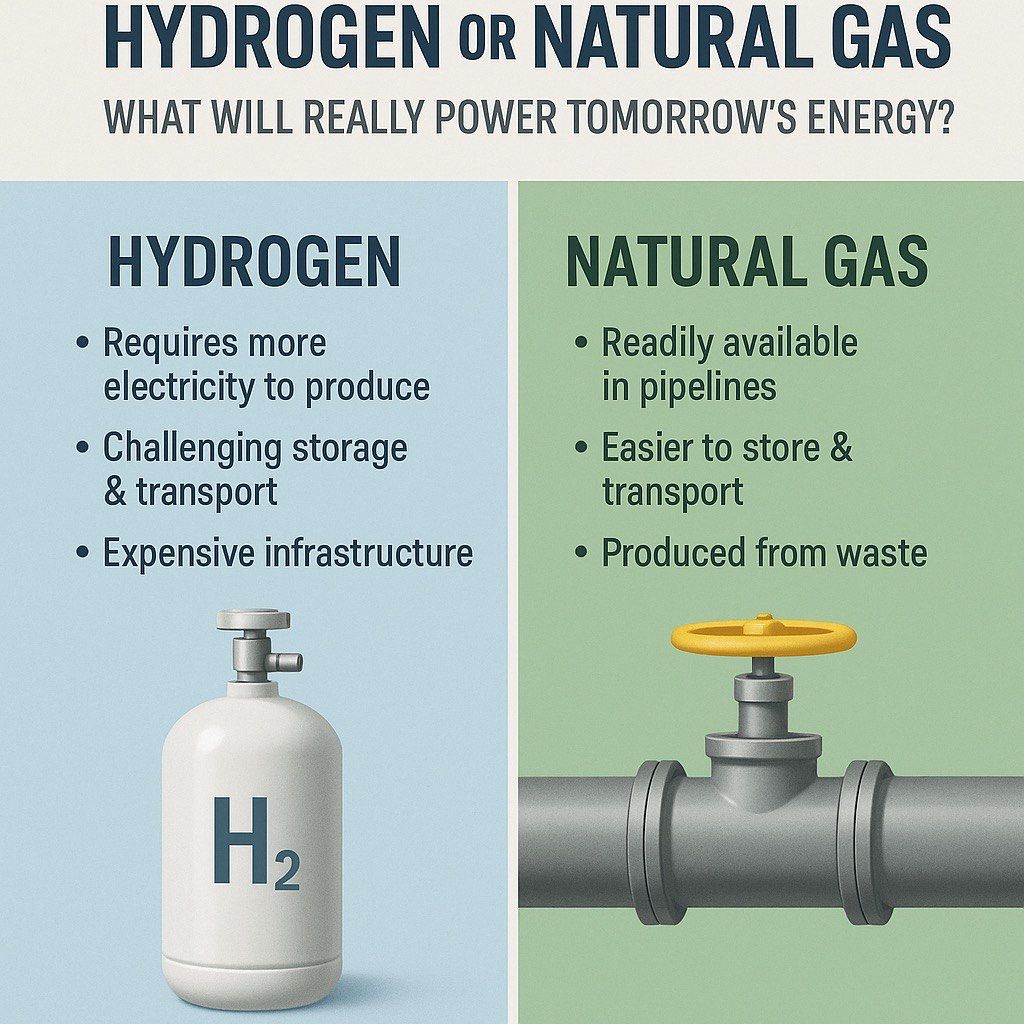
Everyone’s talking about green hydrogen. It sounds like the future: clean, high-tech, climate-friendly. It dominates headlines, conferences, and funding reports. But let’s be honest: while we discuss hydrogen molecules, 99% of meals are still cooked using good old methane.
There’s your first reality check
While billions are being funneled into hydrogen R&D, natural gas (and especially biomethane) is already heating homes, powering turbines, and fueling industry — backed by a robust, established infrastructure. We’re comparing a dream to a working system — and in many ways, reality is winning.
Hydrogen is a versatile energy carrier. It can be made from water and renewable electricity. When burned, it emits no CO₂. It sounds perfect.
But here’s the catch:
Producing just 1 kg of green hydrogen takes 50–55 kWh of electricity. Then you need to compress or liquefy it, store it under high pressure or cryogenic conditions, and transport it through pipelines — most of which aren’t hydrogen-ready. It’s expensive, complex, and energy-intensive.
Now take methane (including biomethane):
It’s already in the pipes. It’s 3x denser, easier and cheaper to transport, and simple to store. It burns cleanly. And here’s the key — we can make it from organic waste, manure, and sewage, turning pollution into power. Yes, methane emits CO₂ when burned — but if it’s made from biomass, its carbon footprint is essentially neutral.
Which brings us to the real question:
If the goal is rapid decarbonization and scalable energy transition, shouldn’t we prioritize waste-to-gas systems over costly infrastructure for a molecule we barely produce at scale?
I’m not dismissing hydrogen. In aviation, heavy industry, or metallurgy — it may be irreplaceable.
But for heating homes, cooking dinner, or running boilers in small towns — gas already solves the problem efficiently and affordably.
I often recommend looking beyond the hype and focusing on what delivers results.
Smart energy is not a choice between “clean” and “dirty” — it’s a choice between what works and what’s still a promise.
